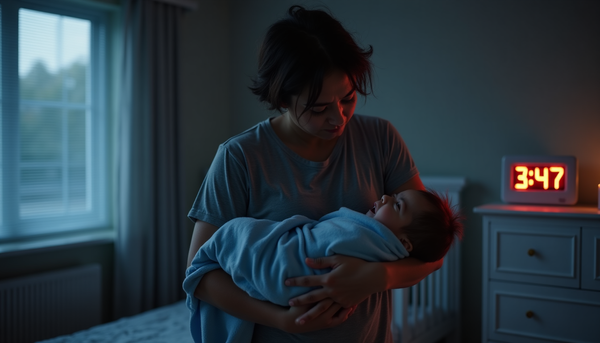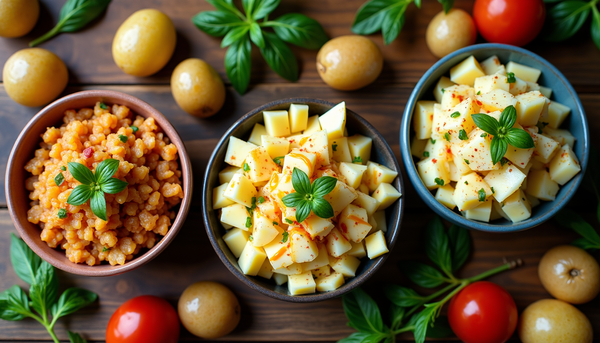Why I've Been "Ruining" My Grandmother's Blueberry Cake for 10 Years

My grandmother would probably roll over in her grave if she knew what I've done to her blueberry cake recipe. But here's the thing - I think she'd secretly be proud.
Ten years ago, I found her handwritten recipe card tucked between the pages of her 1960s Better Homes cookbook. The ink had faded to that sepia brown that only comes with decades of kitchen steam and loving use. "Blueberry Bundt - for special occasions" it read in her careful cursive. And like any good granddaughter, I followed it exactly. Once.
The Problem with Perfect
That first cake? It was... fine. Good, even. But it felt like wearing someone else's clothes - technically correct but somehow not quite right. The recipe called for a modest cup and a half of blueberries, vanilla extract only, and no glaze. Very 1960s. Very restrained.
But here's what I've learned after a decade of what my mother calls "destroying family traditions" - recipes aren't sacred texts. They're starting points. They're conversations across time. And the best ones? They get better when you listen to what your kitchen, your family, and your taste buds are actually telling you.
The Great Blueberry Rebellion
The first "mistake" was accidental. I'd bought two pints of blueberries at the farmer's market because they looked impossibly perfect, like little sapphires with that dusty bloom still intact. When I got home, I realized I only needed one and a half cups. What was I supposed to do with the rest? Make muffins? Please.
In they all went. Four cups of blueberries in a cake designed for one and a half. My boyfriend at the time (now husband) watched me dump them in with the kind of expression usually reserved for witnessing minor traffic violations.
"That seems like... a lot," he said carefully.
"Probably," I agreed, and kept stirring.
Best decision I ever made. That cake was revelatory - truly bursting with fruit, the kind where every bite guaranteed multiple blueberries. It was what the original recipe wanted to be but was too polite to achieve.
The Science of Not Following Rules
Here's what nobody tells you about doubling the fruit in a cake recipe: it shouldn't work. Too much moisture, they say. The structure will suffer. The berries will sink.
And you know what? Sometimes they do sink. Sometimes you get a cake that's basically fruit held together with cake batter. And sometimes? That's exactly what you wanted without knowing it.
But I learned things. If you toss the blueberries in a little flour first, they stay suspended better. If you reserve some for the bottom of the bundt pan, you get these gorgeous bursts of color when you flip it. If you use frozen berries (because not all of us live near farms), pat them dry first or embrace the purple marble effect.
The Greek yogurt instead of sour cream? That was because I ran out of sour cream and refused to go back to the store. The almond extract? Because vanilla felt lonely. The lemon zest? Because citrus makes blueberries taste more like themselves.
When Good Plans Go Wrong (And Why That's Okay)
Let me tell you about the Great Bundt Pan Disaster of 2019. I'd made this cake probably fifty times by then, had the technique down to muscle memory. But this time, I got cocky. Didn't grease the pan properly because I was in a hurry, didn't let it cool long enough because guests were coming.
The cake broke. Not just stuck - completely demolished itself coming out of the pan. I stood in my kitchen holding the center tube with cake crumbs falling everywhere, about to cry over what was supposed to be dessert for twelve people arriving in two hours.
But here's the thing about broken cake - it still tastes like cake. I scooped the whole mess into a trifle bowl, drizzled it with the glaze, added some whipped cream and fresh berries. Called it "deconstructed blueberry bundt." Everyone loved it. My friend Sarah still asks for the "recipe" for that trifle.
That's when I learned the most important lesson: the cake doesn't care about your plans. It just cares about tasting good.
The Recipe (Such As It Is)
So here's how I make it now, with all my grandmother's "improvements":
For the cake:
- 3 cups all-purpose flour (sometimes I swap out half a cup for almond flour if I'm feeling fancy)
- 1/2 tsp baking powder
- 1/4 tsp baking soda
- 1/4 tsp salt (use good salt)
- 1 cup unsalted butter, softened (don't microwave it back to life - just leave it out overnight like a responsible adult)
- 2 cups sugar (granulated, though I've used brown sugar when I ran out and it was lovely)
- 6 eggs (room temperature matters here, drop them in warm water for 10 minutes if you forgot)
- 1 cup Greek yogurt (full fat, we're not making health food)
- 1 tsp vanilla extract
- 1/2 tsp almond extract (optional but highly recommended)
- Zest of 1 lemon (also optional but it makes everything brighter)
- 4 cups fresh blueberries (or frozen, or a mix, or blackberries if that's what you have)
For the glaze:
- 1 cup powdered sugar
- 2-3 tbsp milk or lemon juice
- 1/4 tsp vanilla
The method: Cream the butter and sugar until it looks like clouds. This takes longer than you think - a good 3-4 minutes of actual beating. Add eggs one at a time, then the extracts and lemon zest if using.
Alternate the dry ingredients with the yogurt, starting and ending with flour. This isn't just fussiness - it actually matters for texture. Fold in the blueberries last, and save a handful to scatter in the bottom of your bundt pan first.
Bake at 325°F for about an hour, maybe more. Start checking at 55 minutes. The cake is done when a toothpick comes out mostly clean - a few moist crumbs are fine, wet batter is not.
Cool for at least 30 minutes before attempting to remove from the pan. I cannot stress this enough. Patience here saves heartbreak later.
The Variations That Aren't Really Variations
Because once you start changing things, it's hard to stop:
The "I Live in an Apartment" version: Make it in a 9x13 pan instead of bundt. Bake for less time, maybe 45-50 minutes. Still delicious, less dramatic presentation.
The "It's Actually Fall" version: Swap berries for diced apples and add cinnamon. Or pears with cardamom if you're feeling fancy.
The "My Kid Doesn't Like Chunks" version: Puree half the berries and fold them in with the whole ones. You get berry flavor throughout without the texture issues.
The "Gluten-Free Uncle" version: I've successfully made this with a 1:1 gluten-free flour blend. Add an extra egg and expect it to be slightly more dense but still wonderful.
The Permission You Didn't Know You Needed
Here's what I really want to tell you: that recipe you found on Pinterest with the perfect photos and the precise measurements? It's not the law. It's someone's starting point, and now it's yours.
Maybe you don't have bundt pan - use what you have. Maybe you only have frozen berries - they'll work. Maybe you hate almond extract or you're out of Greek yogurt or your oven runs hot or you live at altitude. Figure it out. Make notes. Try again.
The best recipes aren't the ones that work perfectly the first time. They're the ones that get better as you make them your own. They're the ones that adapt to your kitchen, your family, your grocery store, your life.
My grandmother's cake recipe has evolved into something she probably wouldn't recognize. It's bigger, messier, more casual. It works with whatever berries are on sale. It's forgiving when you forget to take the eggs out early. It's become the cake I actually want to make, not just the cake I inherited.
The Real Secret Ingredient
You want to know what makes this cake special? It's not the extra berries or the Greek yogurt or the lemon zest. It's the fact that it's been made with love, with mistakes, with improvements, with stories.
Every time I make it, I think about my grandmother writing down that original recipe. I think about all the cakes she made that didn't get written down, all the variations she tried that didn't make it into family legend. I think about what she might have changed if she'd had access to better ingredients, if she'd lived longer, if she'd been allowed to experiment more.
And then I think about the cakes my future granddaughter might make from whatever recipe I leave behind. What will she change? What will she improve? What will she think I was being too conservative about?
I hope she wrecks it completely. I hope she makes it her own.
Your Turn
So here's my question for you: what family recipe are you being too respectful to? What dish are you making exactly the way you were taught, even though you know it could be better? What improvement are you afraid to try because it might be "wrong"?
Try it anyway. Make notes. Share the disasters along with the successes. Recipes are meant to be lived with, not preserved in amber.
And if you make this cake - however you end up making it - I want to hear about it. Tell me what you changed, what worked, what didn't. Tell me if you broke it coming out of the pan and turned it into something else entirely.
Because that's how recipes really grow. Not in professional kitchens or food magazines, but in real kitchens where real people are trying to make something delicious with what they have, for the people they love.
My grandmother's cake isn't dead. It's just evolving. And honestly? I think she'd be proud of where it's going.




